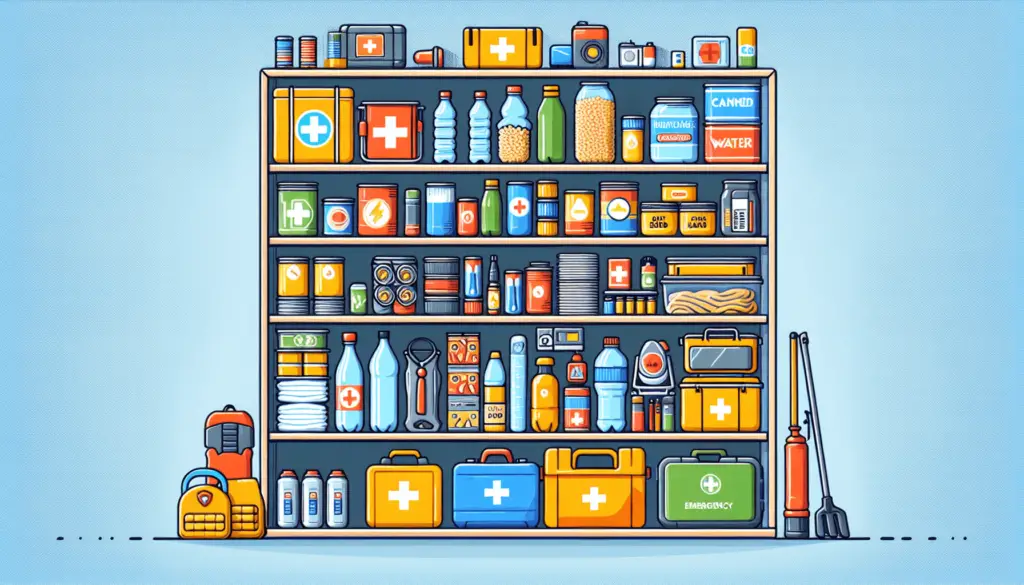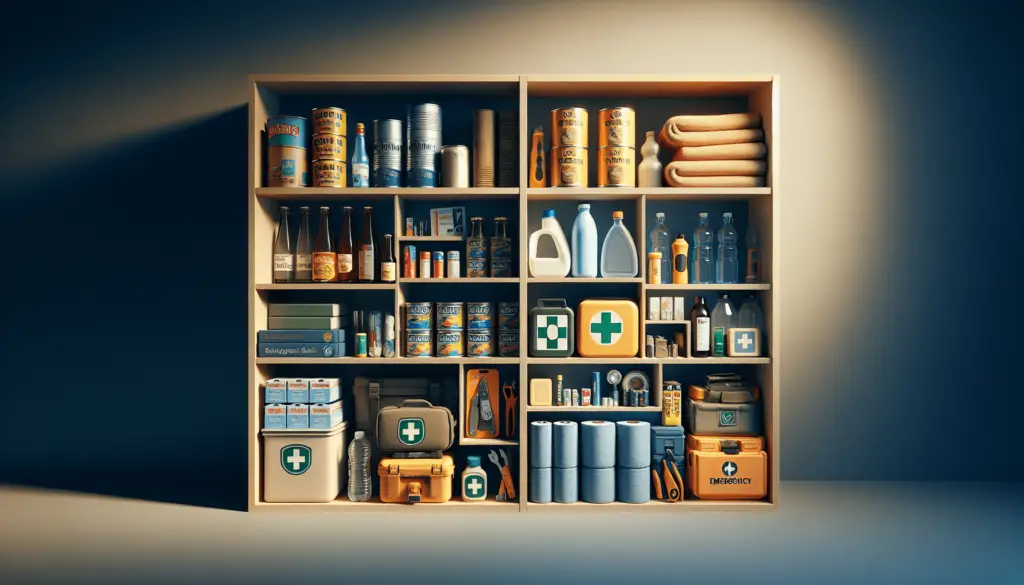In today’s ever-changing world, being prepared for emergencies and disasters is crucial. But how often should you update your prepping supplies to ensure they are reliable and ready for any situation? This article explores the importance of regularly evaluating and refreshing your prepping supplies, highlighting key factors to consider. From food and water to medical supplies and communication devices, staying prepared means staying proactive. So, join us as we delve into the world of prepping supplies and discover the best practices for keeping your emergency kit up to date.

Factors to Consider
Consumable Items
When it comes to prepping supplies, it is important to consider the factors that may affect their reliability and usefulness over time. One of the key factors to consider is the shelf life of consumable items. Whether it’s food, water, or other essential supplies, it is crucial to regularly check their expiration dates and rotate them accordingly. Consumable items that are past their expiration dates may lose their nutritional value or even become unsafe to consume. By regularly evaluating and replenishing your consumable items, you can ensure that you have a fresh and reliable supply during an emergency situation.
Expiration Dates
Checking expiration dates is a crucial aspect of maintaining your prepping supplies. Many consumable items, such as canned goods, packaged snacks, and even medical supplies, have specific expiration dates. These dates indicate the period during which the item is expected to be at its peak quality and effectiveness. It’s essential to keep a close eye on these dates and rotate your supplies accordingly. By using the oldest products first and replacing them with fresh items, you can ensure that your prepping supplies are always up-to-date and ready for use.
Storage Conditions
Along with regularly checking expiration dates, it is crucial to consider the storage conditions of your prepping supplies. Factors such as temperature, humidity, and light exposure can greatly affect the shelf life and effectiveness of certain items. For example, food stored in extremely high temperatures may spoil more quickly, while heat-sensitive medications may lose their potency. It’s important to store your supplies in cool, dry areas away from direct sunlight. Additionally, ensuring proper packaging and sealing can help protect your supplies from pests and contaminants. Regularly inspecting and adjusting the storage conditions of your prepping supplies will help maintain their quality and usability.
Changing Needs
Another factor to consider when updating your prepping supplies is your changing needs. Emergency situations or personal circumstances may evolve over time, requiring adjustments in your preparedness measures. For example, if you have added new family members or pets, you’ll need to consider their specific needs and include them in your preparations. Similarly, changes in your health conditions or lifestyle may require different medications or specialized equipment. By regularly reassessing your prepping supplies and making necessary adjustments, you can ensure that you’re fully prepared for any situation that may arise.
General Guidelines
Regular Evaluation
To keep your prepping supplies up-to-date, regular evaluation is essential. Set aside time periodically to assess the condition, quantity, and relevance of the items in your supplies. Check expiration dates, inspect packaging integrity, and consider if any items need to be replenished or upgraded. By incorporating regular evaluations into your routine, you can ensure that your prepping supplies remain reliable and effective for when they are needed most.
Seasonal Check-up
Seasonal check-ups can be an excellent opportunity to update your prepping supplies. As the seasons change, certain needs and considerations may arise. For example, during the winter months, you may need to replenish your supply of warm clothing, blankets, or alternative heating sources. On the other hand, during the summer months, you might prioritize items such as sunscreen, bug repellent, or extra water storage. By conducting seasonal check-ups and addressing specific seasonal needs, you can enhance your preparedness for different weather conditions and potential emergencies.
Annual Inventory
An annual inventory of your prepping supplies is a crucial step in ensuring their effectiveness and adequacy. Take stock of all your supplies, assess their condition, and make a list of any items that need to be restocked, replaced, or added. This comprehensive inventory will not only give you a clear idea of what you have but also help identify any gaps in your preparedness plan. By conducting an annual inventory, you can maintain a well-rounded, up-to-date supply of prepping items that will serve you well in times of need.

Specific Prepping Supplies
Food and Water
Food and water are the most crucial prepping supplies that you should regularly update. Aim to have a stockpile of non-perishable food that can provide sustenance for at least a few days or even weeks, depending on your specific needs. Rotate these food items regularly, so you always have fresh supplies on hand. Similarly, don’t forget to update your water storage. It’s recommended to have at least one gallon of water per person per day for drinking and sanitation purposes. Remember to include purification methods, such as water filters or purification tablets, in your prepping supplies as well.
First Aid Kit
A well-stocked and up-to-date first aid kit is essential for any emergency situation. Regularly check your kit for expired medications, damaged supplies, or missing items. Ensure that you have an adequate supply of bandages, antiseptic solutions, pain relievers, and any necessary prescription medications. It’s also a good practice to periodically review your first aid skills and update your knowledge on basic medical procedures. By keeping your first aid kit in top condition and staying informed, you can be prepared to handle any minor or major medical emergencies that may arise.
Communication Devices
In today’s interconnected world, communication devices are vital during emergencies. Review your communication devices regularly to ensure they are in good working condition. Test and recharge batteries, update contact lists, and familiarize yourself with various communication methods, such as walkie-talkies, satellite phones, or ham radios. In addition to traditional communication devices, consider adding portable solar chargers or power banks to your prepping supplies. By staying connected, you can receive essential updates, seek help if needed, and stay in touch with loved ones during challenging times.
Emergency Power Sources
An emergency power source can be a game-changer during power outages or disasters. Regularly assess and update your options for emergency power. Consider portable generators, solar panels, or battery-powered inverters as possible solutions. Ensure that you have sufficient fuel, if necessary, and follow proper maintenance guidelines to keep your power sources functional. By having reliable emergency power sources, you can maintain essential functions such as lighting, refrigeration, and communication, even when the power grid is disrupted.
Shelter and Bedding
Preparing for shelter and bedding needs is crucial for prolonged emergency situations. Evaluate your shelter options, whether it’s a designated safe space in your home or alternative options like tents or temporary shelters. Regularly check the condition of your shelter materials, such as tarps, poles, and ropes, and replace them as needed. Additionally, ensure that you have adequate bedding supplies such as sleeping bags, blankets, and pillows. Keeping these items clean and dry will contribute to their longevity and effectiveness during emergencies.
Tools and Equipment
Having a well-equipped toolbox is essential for handling various situations during emergencies. Regularly inspect and update your tools and equipment to ensure they are in good working condition. Check for rust, damage, or wear and tear. Replace any missing or broken tools and consider adding specialized tools that may be useful during specific emergencies. Examples include multi-purpose knives, utility axes, or hand-cranked radios. By having a comprehensive set of tools and equipment, you can tackle tasks and address challenges that may arise during emergencies.
Clothing and Personal Protection
Don’t overlook the importance of clothing and personal protection in your prepping supplies. Regularly assess your clothing inventory and update it according to changing seasons and individual needs. Include items such as sturdy boots, weather-appropriate clothing, gloves, and hats. Consider specialized equipment, such as masks and goggles, for personal protection during emergencies. By having appropriate clothing and personal protective gear, you can stay comfortable and safe in different conditions.
Survival Skills and Knowledge
While supplies are essential, having survival skills and knowledge is equally important. Regularly update your survival skills by attending workshops, reading books, or taking courses related to outdoor survival, first aid, or other relevant topics. Practice basic survival skills, such as fire building, navigation, or water procurement, to ensure you remain competent and confident during emergencies. Stay informed about local emergency protocols and evacuation routes. By continually updating your survival skills and knowledge, you can be better prepared to handle unexpected situations.
Pet and Baby Supplies
If you have pets or babies in your household, it’s essential to include their specific needs in your prepping supplies. Regularly evaluate and update your pet’s food, water, and medication supplies. Ensure that carriers or crates are in good condition and properly sized. Additionally, consider their comfort needs, such as bedding or toys. For babies, regularly check and rotate formula, diapers, and other necessary supplies. Remember to include any specific medical needs or special instructions in your preparations. By updating and maintaining their supplies, you can ensure the well-being of your furry friends and little ones during emergencies.
In conclusion, updating your prepping supplies is a crucial aspect of maintaining your readiness for emergencies. By considering factors such as expiration dates, storage conditions, changing needs, and following general guidelines such as regular evaluations, seasonal check-ups, and annual inventory, you can ensure that your prepping supplies remain up-to-date and effective. Furthermore, by focusing on specific prepping supplies such as food and water, first aid kits, communication devices, emergency power sources, shelter and bedding, tools and equipment, clothing and personal protection, survival skills and knowledge, and pet and baby supplies, you can enhance your preparedness in a comprehensive and well-rounded manner. Remember, being proactive in updating your prepping supplies will contribute to your peace of mind and readiness during challenging times.
